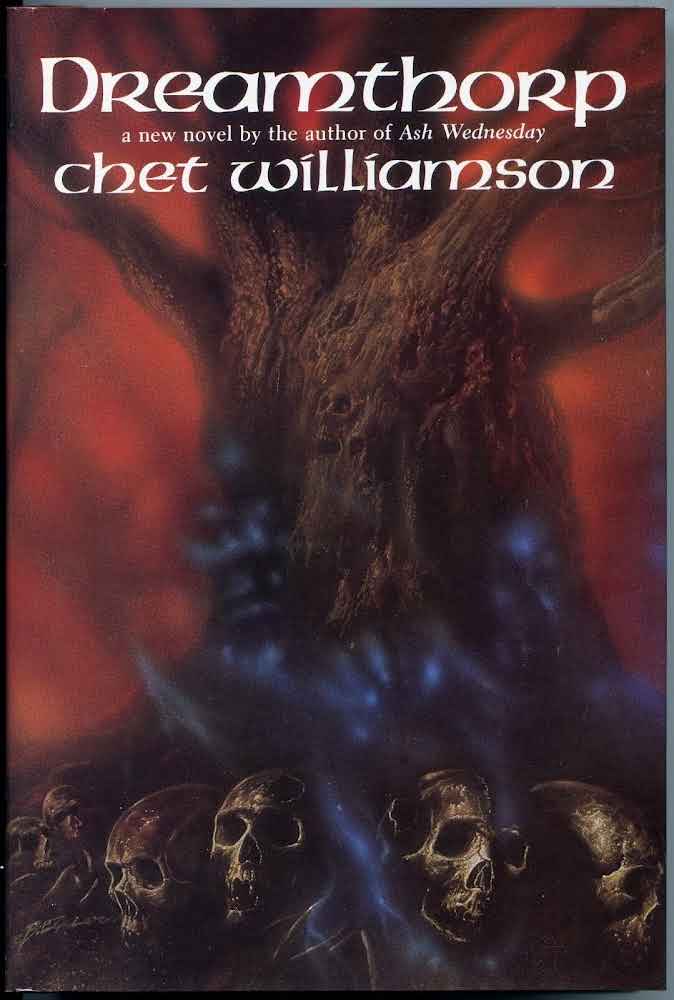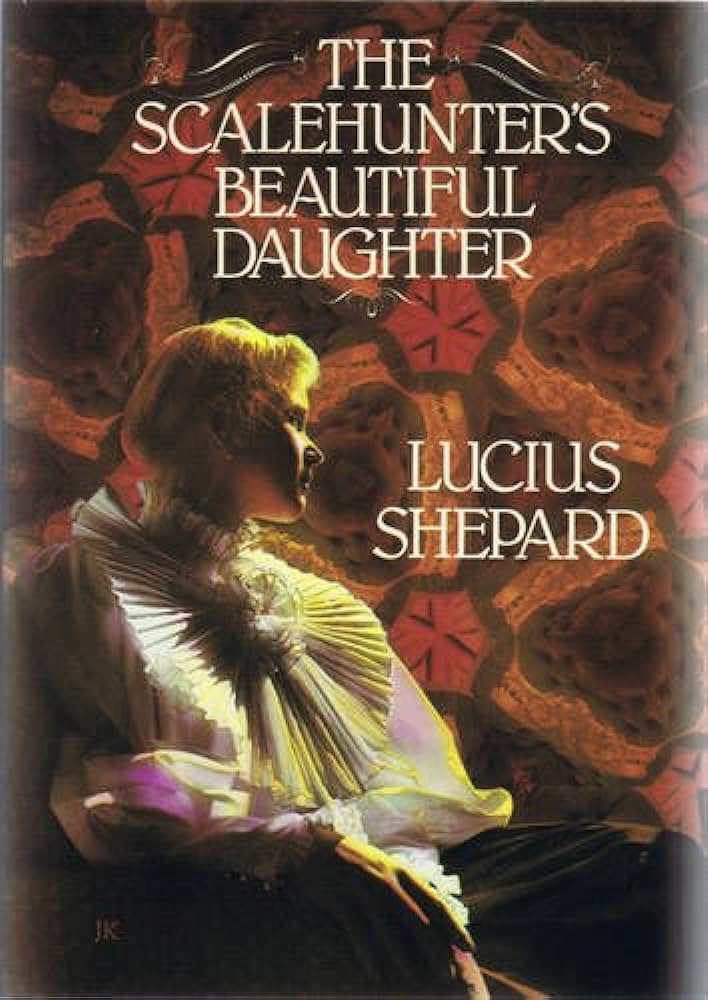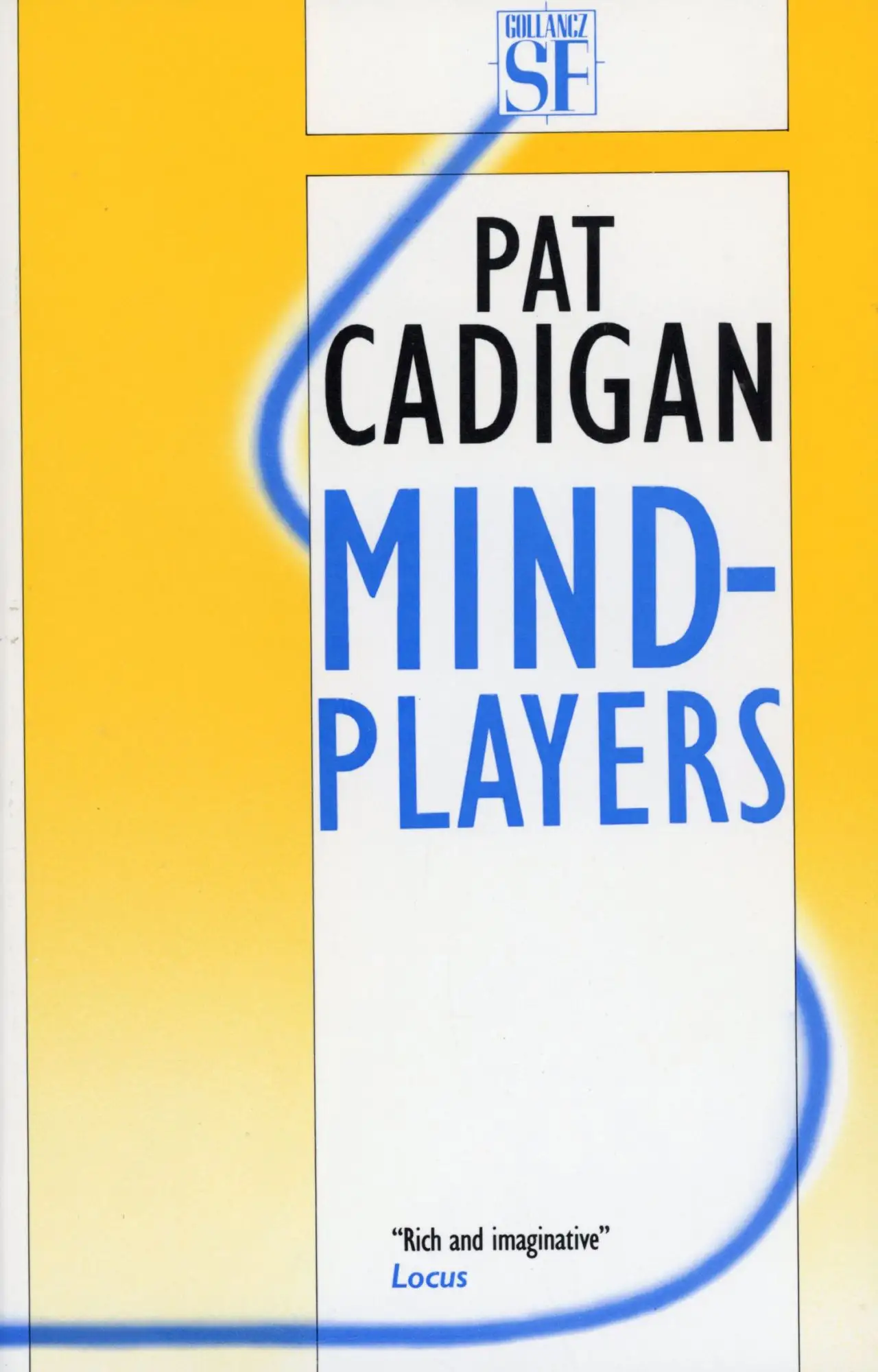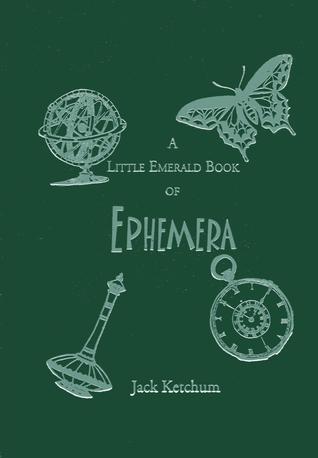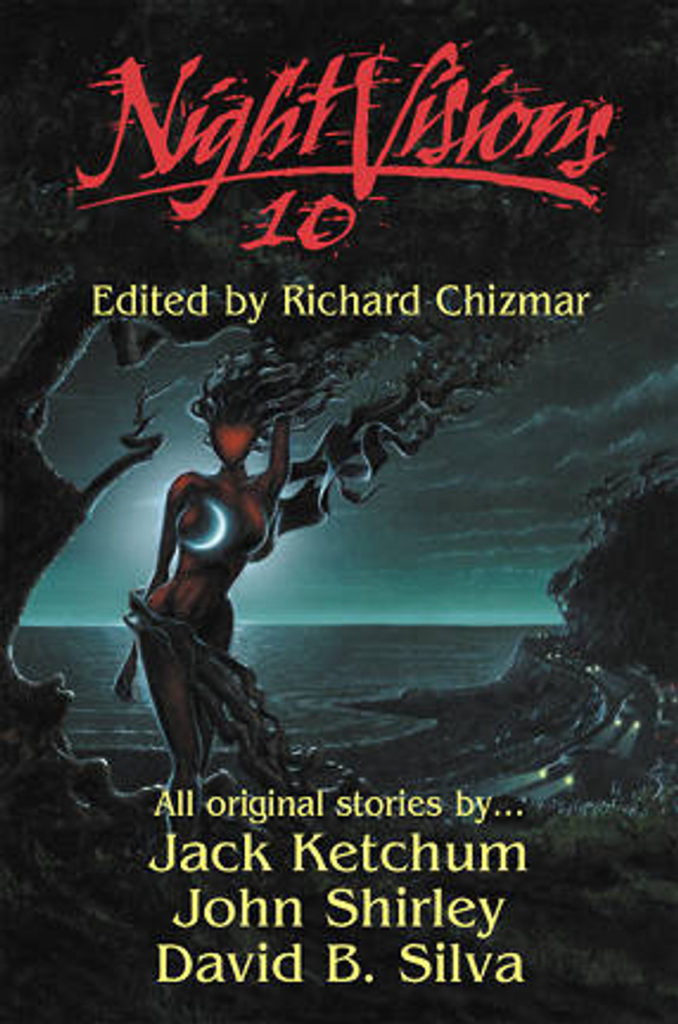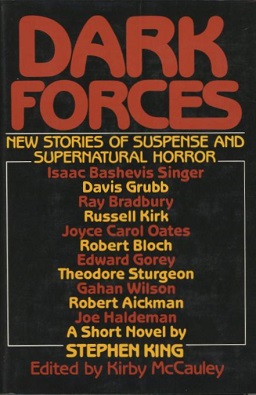Over the years I’ve acquired several SF, fantasy, and horror books from a variety of major publishers as well as small press publishers. Many of the small press publishers rise and fall, while some persist. Some have major cachet within the genres, like Arkham House, while others are notable but ephemeral, like Golden Gryphon; the latter was founded Gary Turner, someone who edited several Arkham House books. After he passed away, Golden Gryphon briefly continued before shutting down, and still managed to publish 63 hardcover books, mostly collections. Dark Harvest published mainly in the horror genre, starting in the early 1980s, and then vanished a decade later. Their Night Visions series ran to nine volumes, was briefly picked up by Subterranean Press (three books), then faded into oblivion.
I see books as both a means to read stories, and works of art in and of themselves. Appearance matters, and it’s far more often the case to see great art and great design in small press books than in ones published by Tor, BAEN, or William Morrow, to name some examples. I don’t know if the artists are paid better in small press, or the publishers just care more. Maybe it’s the fact that small press publishers charge more for their books, and can afford (to some degree) to produce elegant works. Although I still don’t get the attraction of signed/limited vs. trade hardcover editions (maybe it’s the signature?), or even the desire to own books in slipcases (although I have a handful of these, none were acquired for the sake of the slipcase), I remain amazed that writers will sit down and sign 500 pages in one go (or however many signature pages the publisher sends them), and that someone will write in the numbers on those pages.
As far as other small press publishers, I own a few books from a variety of them. I’ll admit that I like that fact that I treasure something from one of these publishers somewhat more than any book from say, Tor Books, or BAEN, or Ace, to name som major publishers. I wish many of these small press publishers still existed. I wish they’d planned better, not rushed themselves into misadventures and bad decisions, or suffered through death or acrimonious splits. Far more than anything in my haphazard book collection, I treasure my Jack Vance Underwood-Miller books. I look at my paperback copy of The Gray Prince, and wonder why they never produced an edition of this book.
Another example: Pulphouse Publishing, which started out with ambitious designs in the late 1980s and then vanished a few years later, had so much promise. They tried a hardback magazine, short collections issues every month, a magazine, and other ideas. I’ve read that they over-extended themselves with too many items too quickly, which is a shame. One would think there’d be a market for smaller press runs of trade paperbacks, each maybe 100-120 words, and published at regular intervals. For some of their output, they published books in various states, such as unsigned paperback, signed/limited edition hardbacks, and even a rarer state. The latter two options seem unnecessary to me, probably only aimed at a refined and narrow collector’s market. The late 1980s/early 1990s mean a great deal to me in terms of authors that I like, and Pulphouse gave a voice to many of them in their various editions. I look at the supposed leading lights of genre fiction today, and rarely is it the case that I would pick up anything by these writers. A different time, different market, I suppose.
The list goes on: Silver Salamander, Axolotl Press, Underwood-Miller, Cemetery Dance, Gauntlet Press, Borderlands Press, Mark V. Ziesing Books, Ursus, Fedogan & Bremer, Donald M. Grant, NESFA Press, Morrigan, PS Publishing, Night Shade, Subterranean Press, White Wolf, Small Beer Press, Centipede Press, and many more. A few of these publishers still exist today. Subterranean Press might be the best in terms of success, while Centipede Press produces the best looking books (and its certainly up there in terms of cost). Charnel House produces quite expensive editions, but none that I’ve never bought, so I can’t say anything about their books. Before 1980 there were no doubt many others, long since shuttered. These days, the numbers have somewhat diminished. Major genre publishers, like BAEN or Tor, continue even after the primary mover has gone, but in terms of the small press, it seems like a labor of love more than anything else. Many of them exist through the labor of love from one person, maybe two, and once the fire is gone, or the reality of cost and profit sets in, all that remains are a few books on the collector’s market.
Over the years, countless genre magazines have died, countless editorials and comments have been written about the death of the short fiction market. Anthologies and collections still sell only a few copies, and it’s too bad that many of these small press publishers, where collections and anthologies make up a large set of titles, exist only for a short moment in time. Then again, I look back at some of the so-called major publishers of the 1980s and earlier, and most of these imprints have since shut down, or been bought out and subsumed into other publishers. Regardless, I’m happy these small press publishers exist. Now, if only they would release their books on their promised schedule…
